Marcia Thornton Jones's Blog, page 53
February 15, 2022
Ode to Sass (And Why I Don't Write It)
I admit, I do not write sassy characters. My characters may get a little mouthy, brash, and gobby, but sassy isn’t in their repertoire. Sass can be too challenging. It could be that I’m not a sassy sort, either. I’m more like a long-winded gob with a pinch of Eeyore.
Sassy characters throw shade. But they do so with such finesse, it makes one grin. Sass is a form of humor that unfolds in a slow build to culminate into an unexpected but gobsmacking punchline. My MFA students love to write sassy characters, but all too often, the sass misses the mark. The character is reduced to a caricature, a shallow groan that is too much of a mean girl stereotype. In the case of LGBQT characters, sass is too often reduced to stereotype.
Sass doesn’t mean strong. One doesn't have to be strong to be sassy. Some are sassy to cover up their fear. Too much sass and it comes across as rude, flippant and fragile. And maybe that’s the point of the sass, but all too often it seems more of a haphazard attempt at characterization. It all depends upon the character and her story.
Sass is more like a fine seasoning. Just a pinch of it, and it brings out the full flavor of the character. But too much ruins the meal.
The best way to learn how to write sass is to study sassy characters.
For example:
Sassy, from Homeward Bound (and voiced by the perfectly pitched Sally Field, via Disney, based on the equally fantastic character in The Incredible Journey (1961) by Sheila Burnford). She’s quick-witted, with her “cats rule and dogs drool” philosophy. But she is also loyal, optimistic and bold.
Another bold favorite is Hermione Granger (portrayed by the indomitable Emma Watson in the Harry Potter movies, based on the equally fantastic character in the books written by JK Rowling). In which she balances a strong sense of self with an equally strong sense for others. “Just because you have the emotional range of a teaspoon doesn’t mean we all have."
More favorite Hermione quotes to live by:
“Oh for heaven’s sake! Listen to me, all of you! You’ve got just as much right as wizards to be unhappy! You’ve got the right to wages and holidays and proper clothes, you don’t have to do everything you’re told — look at Dobby!”
“Now if you two don’t mind, I’m going to bed before either of you come up with another clever idea to get us killed - or worse, expelled.”
“No, Harry. Even in the wizarding world, hearing voices isn’t a good sign.”
And don't forget about these sassy favorites:
Eilony (Lloyd Alexander, Prydain Chronicles; 1964-1968)
Puck (Michael Buckley, Sisters Grimm; 2005-2012)
Isadore Quagmire (Lemony Snicket, Series of Unfortunate Events; 1999 – 2006)
Anne Shirley (LM Montgomery, Anne of Green Gables; 1908)
Matilda (Roald Dahl, Matilda; 1988)
Who are your favorite sassy characters?
--Bobbi Miller
February 14, 2022
Smart and Sassy characters we love! by: Jennifer Mitchell
Happy Valentine’s Day! A book that I discovered a few years ago that has a smart and sassy character is Clementine, by Sara PennyPacker. Clementine is the type of female character that might remind you of Junie B. Jones, Ramona, or even Judy Moody. When we read it in class my students always find a lot of connections they can make between the characters. Her sassiness can be seen when she refers to her brother; because he got a “normal” name and she was named after a fruit, she is always calling him a random vegetable name. The reader also picks up on it when she says she is the only person who pays attention in class, and that is why she knows things that are happening outside when she is looking out the window. The book has a great story line, especially if you are reading it in a school setting and discussing it. She is a fun character to read about and follow her journey, she has heart with equal parts smart and sassy.
Jennifer Mitchell-- teacher in the Kansas City area

February 12, 2022
EACH OF US A UNIVERSE: by Jeanne Zulick Ferruolo with Ndengo Gladys Mwilelo
In keeping with our theme of sassy heroes and a favorite new book, I am pleased to highlight this book from MG author Jeanne Zulick Ferruolo.
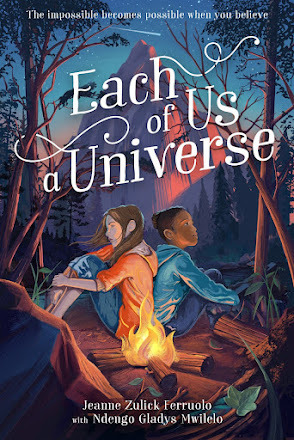
Here is my review for the book about two girls from two different cultures who bond over a shared love for a legend and a mountain.
Calliope Scott runs. She is always on the move, trying to escape from all the things troubling her in the small town of Bleakerville. Mountain climbing is her passion, something she did with her dad...before he went to prison. Before her mom got cancer. When a new girl moves into town, a girl whose love of the mountain is as strong as Cal’s, they set out to conquer Mt. Meterorite and the magic they both hope will save their families.
Will Cal and Rosine climb all the way to the summit? Will they find the magic said to reside there from local legends? Young readers will keep turning pages to find out in this heartfelt and honest story of a girl’s love of the mountain that looms large literally and figuratively in her life.
Themes of believing in yourself, the power of friendship, and how love can help you through life’s difficult and scary moments resonate throughout. Magic happens when you believe.
Darlene Beck Jacobson believes in magic and the power of friendship. She blogs about this and more at http//www.darlenebeckjacobson.wordpress.com
February 11, 2022
Uh. Hmm. Okay.

I’m sitting here, staring blankly at February’s theme words.
Smart.
Sassy.
What should I do with them? What should I write?
Let’s start by breaking this down.
February. It’s a month with three red-letter calendar days. One to celebrate (mostly) smart national leaders, one to celebrate love (smart? sassy? you choose), and one to celebrate an unwitting rodent (just ridiculous). And I’ve got nothing else here.
Let’s try a different approach.
Smart.
Sassy.
Okay. So I’m smart, but not as smart as I’d like sometimes. Like when I get my characters into a jam, I often don’t think I’m smart enough to get them out in a non-convoluted, change-your-plot-instead-and-fast(!) type of way. But somehow I manage. So, perhaps, I need to give myself more credit in the smarts department.
But sassy? Okay. So, I can be sarcastic. But I’m quietly sarcastic. There’s nothing quiet about sassiness, a quality that tends to come with a heaping side of boldness. I know sassy people. Want to be them some days. And I love it when a streak of sass comes out in my characters. Those characters! Their words! Their actions! Their sass!
Hmm.
I did that. I gave them that quality.
So maybe, just maybe, there’s a sassy person who’s been hidding within for all these years.
And sitting here, staring not-as-blankly now at February’s theme words, it’s amazing to think that creating characters has, in some small measure, created new sides to me.
Not-sassy-as-she’d-like Jody Feldman, author of The Gollywhopper Games series (middle grade) and the forthcoming YA thriller No Way Home (August 2, 2022) is booking school visits – elementary, middle, high schools – for the 2022-23 school year. She can’t wait to talk to readers in person again!
February 10, 2022
In with the New, Out with (a lot) of the Old
For example, I began reading Beezus and Ramona by Beverly Cleary to my girl. I adored all things Ramona when I was a kid. But I’d only gotten to page 9, when I came across this line where Beezus complains about Ramona’s taste in books. “Why did she have to like a book about a steam shovel anyway? Girls weren’t supposed to like machinery. Why couldn’t she like something quiet, like Peter Rabbit?”
I had to pause in my reading to have a discussion with my daughter that girls didn’t have to like quiet things and could like machinery if they pleased. In a lot of ways, the Ramona books hold up, and I wish someone would go through them to edit out this kind of content. And this could probably be said for a lot of older books.
My favorite ‘old’ book that I think holds up beautifully is Lois Lowry’s The Giver. It’s one of the few books I reread every few years, and a book that sets the standard for me of a perfect middle grade novel. I didn’t actually read this book as a kid. I discovered it when I taught 7th grade, because I inherited a class set with my classroom. When you look at the cover, you can guess why kid me didn’t pick this up. Yikes.
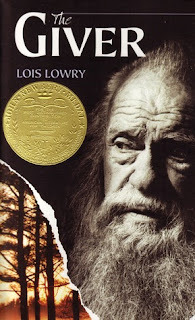
Despite the cover, The Giver remains a classic for good reason. The utopian novel is rich with thematic themes for classroom discussion, including the value in remembering the past.
Most recently published middle grade novels are well edited for content that might be concerning. I am extremely grateful to my editor Susan Dobinick for picking up my mistakes writing middle grade. In my recent novel Birdie's Billions, I had Birdie’s cousin use the word ‘lame’ as an adjective to describe something. Susan wisely pointed out that this is ablest language unkind to the disabled, so of course, I changed it.
Thanks to editors like Susan who help today’s published books be the best they can be, so I can read them to my daughter without worrying. And there are so many wonderful new middle grade novels. The wonder bar seems to rise each year. It’s hard to pick just one to recommend. But since you asked, I chose Long Lost by Jacqueline West.
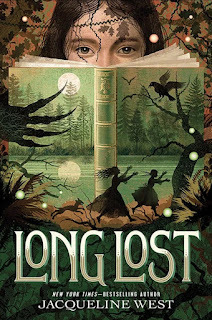
Talk about a gorgeous cover. A story within a story, this mystery features a magical book that Fiona finds in a haunted library. The book tells the story of two sisters, one who went missing. Fiona is a sister herself living in the shadow of her older sibling, an ice skater training for the Olympics. I enjoyed the relationship between the two parallel stories. I loved the setting, the spooky tone, and the exploration of sisterhood.
Edith Cohn is the author of middle grade mysteries: BIRDIE'S BILLIONS (Bloomsbury) and SPIRIT'S KEY (FSG/Macmillan). A former 7th grade English teacher, she loves writing for kids. She was born and raised in North Carolina and currently lives in Los Angeles with her husband and young daughter.
February 8, 2022
When Old Friends Meet New Ones -- by Jane Kelley
Whenever I make a character, I don't describe the color of their eyes or the slope of their nose. I describe what they are reading. Of course some characters are parrots or other creatures who can't turn pages. And there are humans who don't like to read. But I assume that anyone who reads for pleasure probably expects to read about characters who also love to read.
That's how I know who I might like to have for my friends. Do they read or not? What do they read again and again. And why?
I'm not referring to the so-called great books. Or the trendy books. Or the ones which everyone is talking about for good––or bad reasons. I'm talking about a book that tells me a little more about a person because they've chosen it for their own individual reasons.
"What's your favorite book?" is asking what spoke to you. What made you feel seen. Understood.
For me when I was a kid? Understood Betsy -- there! In the title! How Betsy came to be UNDERSTOOD.

Was this the cover of my copy? I don't remember. I read it so much that the cover disappeared.
I also understood that this wasn't a book I should claim as my favorite. Look how hopelessly old fashioned it seems. But something about her emotional arc was comforting to me. The difficult child was eventually appreciated.
In my current work-in-progress, the main character is reading The Little Prince.
"'Grownups love figures. When you tell them that you have made a new friend, they never ask you any questions about essential matters. They never say to you, "What does his voice sound like? What games does he love best? Does he collect butterflies?' Instead they demand: 'How old is he? How many brothers has he? How much does he weight? How much money does his father make?' Only from these figures do they think they have learned anything about him."
Or, if I dare add to Antoine de Saint-Exupery's list, -- what books do they love?
I had forgotten these essential truths in The Little Prince. I remembered it was about a traveler from another planet. What a delightful surprise to find one of my themes expressed so well.
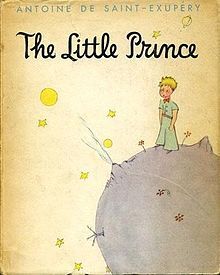
Jane Kelley is the author of many middle grade novels in which her characters are reading other books. Nature Girl (My Side of the Mountain), The Girl Behind the Glass (The Bastable Children), and The Desperate Adventures of Zeno and Alya (The Secret Garden).
February 5, 2022
Q&A with Veronica Chambers, Author of Call and Response: The Story of Black Lives Matter

Hi, I’m Veronica Chambers and I’m the author, along with Jennifer Harlan, of Call and Response: The Story of Black Lives Matter. The book features more than 100 archival and contemporary news photographs and it talks about why people protest and why it matters. The first half of the book is a primer on racial justice movements — how did we, as a country, get to the summer of 2020 when 15 to 26 million people took to the streets. The Black Lives Matter protests that summer are believed to be the largest protest movement in our country’s history.
The second half of the book looks at how people protest — from athletes to artists to musicians — and how young people protest across a range of issues.
- How does the Black Lives Matter movement draw from other campaigns for social change?
In our book, we have two timelines. We have a timeline of Black Lives Matter, and a timeline of the modern Civil Rights movement and the Black Power movement. I think that it's important to include both of those movements, because in schools in the U.S. people often teach civil rights – they teach Martin Luther King Jr. and the March on Washington – but they don't always teach Malcolm X and the Black Panther Party, and the more radical parts of the movements of the 1950s and '60s.
One of the things that I think the Black Lives Matter movement has done so successfully is to integrate this radical notion, advocated by the Panthers, that you don’t have to be an example of “black excellence” to deserve justice and equity. We don’t earn our humanity by being achievers, by getting good grades and attending prestigious schools. We earn our humanity by being human.
- What did you learn about protest in writing the book that you didn’t know before?
We have a section in the book called “The Anatomy of a Protest.” That chapter actually started as an Instagram story by a Times reporting fellow named Juliana Kim.
I saw it and thought it was so great, because a lot of times when people look at protests they think, “It’s just throngs of people in the street.”
But what Juliana did was break down the roles of people in the protests. So there's the marshal who leads a protest, who calls out the calls that the crowd responds to — for example: “Whose streets? Our streets!” The marshal is there to lead and to be visibly in the front.
Then you have the legal observers, people who are lawyers and paralegals who are there in case people get arrested to take notes, to call lawyers and to help protect the rights of the protesters.
You have street medics who are there in case somebody gets hurt, so if someone falls or gets trampled or breaks a leg or anything they get medical care as quickly as possible. You have people who are there to give supplies – face masks and water and food.
We learned that many cyclists who join protests are actually trained in mediating situations with motorists who don't want to be cooperative with the protest. They also go ahead and help scout new routes when the protest gets off track.
I love that section because I think protests, like everything you want to understand, really benefits from a closer gaze.
What we really tried to do in the book is say, “OK, any protest – it could be climate protests, it could be protests against gun violence, it could be racial justice protests, it could be for disability rights, it could be for gender and sexuality rights – they all have a common theme in that they are way more organized than we think they are. And they are for the most part peaceful and this is why they are effective all around the world.
- In what ways are young people uniquely suited to change the world?
One of my favorite pieces that I wrote for The New York Times last year was based on an interview I did with Paola Velez about Bakers Against Racism. It’s this amazing movement in which thousands of bakers, in at least 41 states and on five continents around the world, have raised millions of dollars for social justice organizations.
She talked about how the very act of baking is an exercise in mindfulness that lends itself to the thought-provoking work of social justice. “It takes a little bit of patience and it takes a little bit of grace,” she said. “So I always say, you can bake the world a better place, because in those times of reflection, you are really staying still and thinking about how to be someone that gives.” Even non-professional bakers, including children, are welcome to join the effort, she said, and they might benefit from some meditative time with the oven.
I love this because I think it’s important to let young people know that, when it comes to lifting their voices about the issues they care about, protest can take many different forms. Paola and her crew bake as a form of protest because that’s what they love to do. Murals and art work have always been integral to protest and are so important. There are protest songs, everything from "Strange Fruit" by Billie Holiday to "Alright" by Kendrick Lamar. There are protest bike rides and skateboarding events and surfing paddle outs. Whatever you're into, whatever tools you have in your tool box, you can use that to make a difference.
~
Keep up with Veronica Chambers at her author site and grab a copy of Call and Response from your favorite bookstore.
February 4, 2022
THE ALTERNATE UNIVERSE OF SMALL PRESSES (Guest Post by Heather Mateus Sappenfield)

I had an agent. We parted ways.
We’d started out as newbies together, then both grown and were no longer a fit. I can’t blame her really. Most agents like to specialize, which means if they rep you for one type of book, they expect you to keep writing that same sort of book. For many writers, that’s fine, and they can build a brand that readers know. For me, though, a story arrives via a narrator’s voice. Sometimes that narrator is eighteen, sometimes thirty-eight, sometimes almost-eleven. I write the story that voice needs to tell, and so I’ve published two YA novels, a literary short story collection, and most recently a MG novel. With the first two books, that agent sold them to a larger press. With the second two books, I had no agent, rather published via contests with smaller indie presses, and this alternative turned out to be wonderful.
The truth is, publishing’s traditional route can be reactionary and narrow in scope. You may have written a terrific book, but it’s being declined time after time because it doesn’t fit with what’s hot right then. Take heart, there’s a fabulous world of indie presses out there, hungry to publish originality and variety. Most of them will offer little if any type of advance, but tend to provide better royalty packages that you will begin earning right away. They will cradle your book in their palms and hold it close throughout editing, cover design, and production. Marketing will be completely up to you, but—news flash!—it always is, whether you’re with one of the biggies, or a micro publisher.
Where you’ll notice a difference is with bookstores. The current distribution system favors big publishers, no two ways about it. There are established highways from them to bookstores, via reps, marketing and book organizations, that can often be cost prohibitive. (Name a big book and it’s most likely had A LOT of money spent on marketing.) But take heart. Keep your head down and work at it on a regional level, and you’ll probably get results similar to if you’d gone the traditional route.
I’ve been fortunate: I’ve entered contests with small presses and won. But you can also submit directly. There are some caveats with small presses, though. First, consider their mission statement and discover if their publishing ethic fits your manuscript. Second, study their catalog of published works and note their aesthetic. Third, confirm their distribution channels; if they use IPG, PGW, or IPS, or a distribution arm of a larger publisher, bookstores are going to be more open to ordering your book. Fourth, explore how their books have performed post-publication, in contests, on Goodreads. Fifth, look into if they’ve produced audiobooks, if they’re marketing film rights. Do your research, make sure the press is legit, know its history and essence, and be honest with yourself about whether it’s a match for you. And then, if it feels right, step into this universe and submit.
~

In Heather Mateus Sappenfield’s “The River Between Hearts” (Fitzroy Books/Regal House, February 1, 2022), third grader Rill’s father disappears, lost to a turbulent river. A year later, everyone insists he’s gone, but Rill is still certain he’s coming back. When Rill discovers her classmate, Perla, hiding out in Rill’s tree house after Perla’s family is deported, the two form an unlikely bond. Together, the girls embark on a remarkable adventure which tests their understanding of themselves, each other, and of the world around them—and opens new, unexpected doors to healing.
February 3, 2022
Smart & Sassy Characters from #ALAyma 2022
We love our smart, sassy middle grade characters, don't we? If I tried to list them all, this blog post would take over the internet. 😊
Instead, I'll highlight a tiny sampling of my personal faves from last week's #ALAyma awards. If you haven't already, please go meet:
...Jo Jo Makoons!
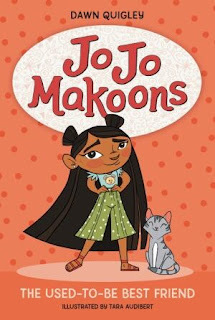 American Indian Library Assoc. Honor Book
American Indian Library Assoc. Honor Book...Mary Golda Ross (a real person!)
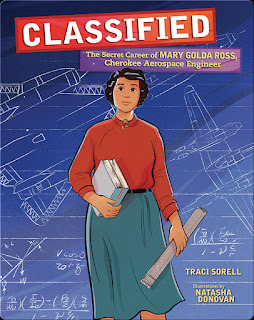 American Indian Library Assoc. Honor Book
American Indian Library Assoc. Honor Book...Ellie, who will teach you how to starfish!
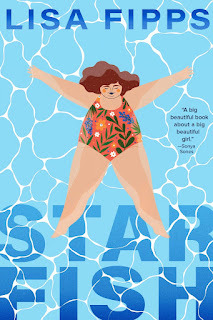 Printz Honor book
Printz Honor book...and Klynt, who knows a thing or two about robodogs.
 Eleanor Cameron Notable Middle Grade Book
Eleanor Cameron Notable Middle Grade BookHappy reading!---Irene Latham is a grateful creator of many novels, poetry collections, and picture books, including the coauthored Can I Touch Your Hair?: Poems of Race, Mistakes, and Friendship, which earned a Charlotte Huck Honor, and The Cat Man of Aleppo, which won a Caldecott Honor. Irene lives on a lake in rural Alabama.
February 2, 2022
The Old and the New
The Old and the New
As a book blogger, I spent a huge amount of time reading, and one type of book that I’ve been enjoying for years now is the retelling of classic stories with a modern twist. These works run the gamut from picture books to middle grade to YA to adult literature (as does my blog!).
The Hogarth Shakespeare series, for example, features retellings of Shakespeare’s plays by such modern luminaries as Margaret Atwood, Tracy Chevalier, and Anne Tyler. A similar series takes on Jane Austen’s work, with modern updates from Alexander McCall Smith, Joanna Trollope, and others. In fact, there are so many retellings of Shakespeare and Jane Austen that it’s impossible to keep track of them all.
As we’re focusing on middle grade here, I thought I’d mention a few books I’ve highlighted on my blog, where I interview authors.
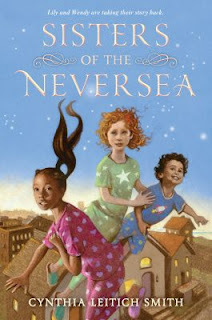
One recent retelling is Cynthia Leitich Smith’s Sisters of the Neversea, which updates J.M. Barrie’s Peter Pan featuring an English character and a Native American character. Smith, a citizen of the Muscogee (Creek) Nation, told me: “J.M. Barrie’s Peter Pan (or Peter and Wendy) is a classic book that included Native characters but in a stereotypical way. So it seemed high time to reframe them more positively as three-dimensional human beings who rang true.”
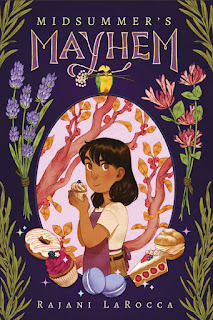
Another, Midsummer’s Mayhem, by Rajani LaRocca, updates A Midsummer Night’s Dream. In our interview, LaRocca said, “Midsummer’s Mayhem is inspired by A Midsummer Night’s Dream, but it’s not a straight retelling. The book is really about 11-year-old Mimi, who is feeling invisible in the midst of her large, super-gifted Indian-American family and dreams of winning a baking contest to finally demonstrate her own talent.”

A third, Pippa Park Raises Her Game, by Erin Yun, was inspired by Dickens’ Great Expectations. Yun told me: “In Great Expectations, the main character, Pip, has a mysterious benefactor who helps him become a gentleman. In Pippa Park Raises Her Game, Pippa receives a strange scholarship to an elite private school. Both books have themes of ambition and class, and in both cases, the main character pines after a cold, aloof love interest.”
There are so many more out there! I’m looking forward to whatever crosses my desk next.
--Deborah Kalb
@font-face {font-family:"Cambria Math"; panose-1:2 4 5 3 5 4 6 3 2 4; mso-font-charset:0; mso-generic-font-family:roman; mso-font-pitch:variable; mso-font-signature:3 0 0 0 1 0;}@font-face {font-family:Calibri; panose-1:2 15 5 2 2 2 4 3 2 4; mso-font-charset:0; mso-generic-font-family:swiss; mso-font-pitch:variable; mso-font-signature:-536859905 -1073732485 9 0 511 0;}p.MsoNormal, li.MsoNormal, div.MsoNormal {mso-style-unhide:no; mso-style-qformat:yes; mso-style-parent:""; margin:0in; mso-pagination:widow-orphan; font-size:16.0pt; font-family:"Times New Roman",serif; mso-fareast-font-family:Calibri; mso-fareast-theme-font:minor-latin;}.MsoChpDefault {mso-style-type:export-only; mso-default-props:yes; font-size:16.0pt; mso-ansi-font-size:16.0pt; mso-bidi-font-size:16.0pt; mso-fareast-font-family:Calibri; mso-fareast-theme-font:minor-latin;}div.WordSection1 {page:WordSection1;}



